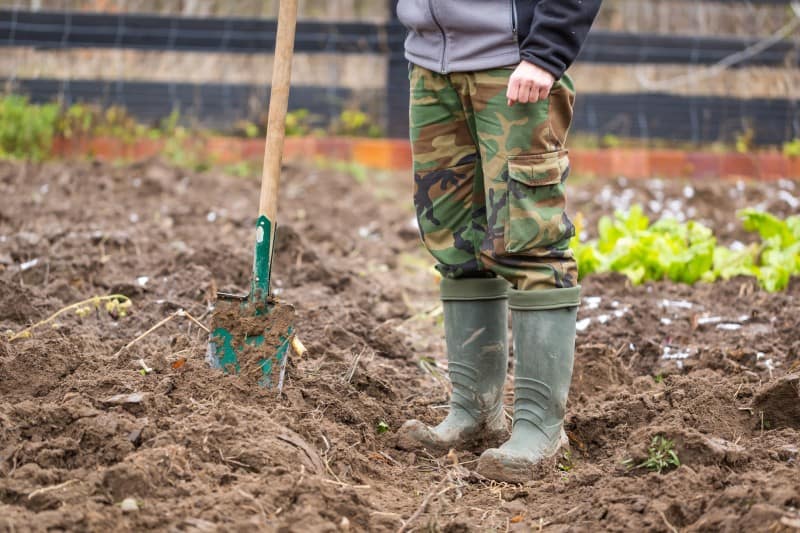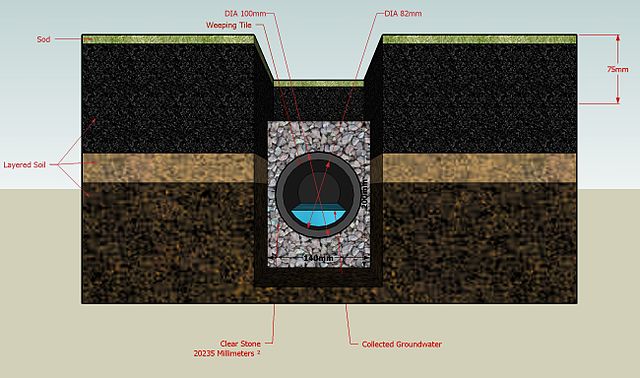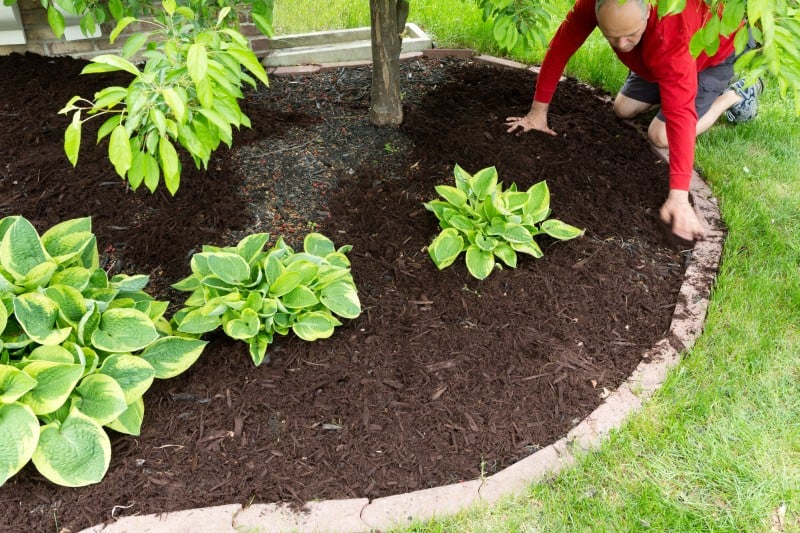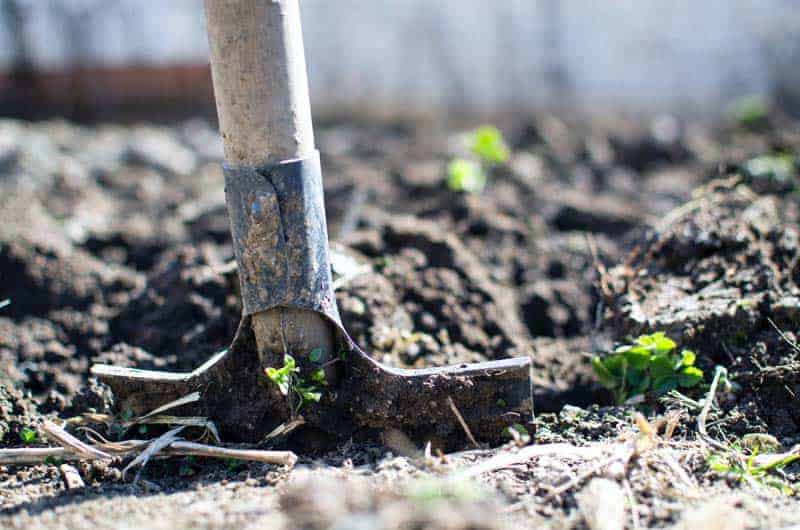A well-maintained yard is a great addition to any house – provided that it is looked after properly. Not looking after your yard can quickly cause it to spiral out of control after a spot of rainy weather.

Once your yard has become muddy and marshy, it is much more difficult to get back into a lovely looking condition.
However, as you’re here on this article, it seems as though it’s too late for you and that you already have a muddy yard that needs fixing.
Well, it’s not going to be an easy job, but we’ll get through it together! Luckily, there are a few different options for fixing your yard so feel free to pick the option that sounds the best for you.
Let’s dive right in, shall we?
Checking and Unclogging your Drainage
Yards are drained by downspouts that take the rainwater away from the grass and pours it into a drainage pipe.
However, downspouts don’t last forever and your boggy yard might just mean that your downspouts aren’t working properly as they should. Rather than redirecting the water into the drainage pipe, the water will pool and spread throughout the yard.
Make sure that your downspouts are extended to the maximum length to promote getting the water as far away from your yard as possible.
Ensure that they’re not clogged with stray grass or dirt, and try repositioning them to make sure that they are as vertical as possible.
If all else fails, you might need to give up hope and accept the need for a new drainage system. Opting for new downspouts could be a fine option, but might we suggest installing a french drain underneath your lawn?

A french drain consists of a small trench filled with a drainage pipe with rows of holes running down the entire length.
The trench is also full of rocks to add another layer of drainage. The rocks allow the water to reach the pipe quicker, getting rid of the water faster.
Ensuring that your yard has sufficient drainage will prevent water from pooling and creating a boggy base. If you’re lucky and have caught the problem in time, your yard will slowly begin to revert back to normal.
However, you might need to do some additional fixing to get it back into fighting shape once more.
Mulching Maintenance
Now that you’ve got the drainage sorted in your yard, you might be discouraged to find that the muddy mess isn’t resolving itself. This means that you’ll need to cover it in some way, whether that be with some landscaping or more grass seed.

However, you cannot simply build on marshy ground, so you’re going to need to wait out the rainy weather so that you can attend to the dried mud.
Mulch is a biodegradable matter that offers plenty of minerals and nutrients into the soil, and you can even make it from your own kitchen scraps. Add a thick layer of mulch onto the yard so that the mud doesn’t spread or move while you’re waiting for the perfect time to replant your grass.
Once you’re ready to move onto the next step, don’t worry about getting all of the mulch back up again. Simply rake it through the soil so that the new grass seed can benefit from the rotting mulch.
Your grass will be much healthier because of it! Another plus of raking mulch through your soil is that it actually improves the aeration of the soil as it decomposes.
Aeration is Key
Aerating your yard will keep the soil from becoming too compact. Compact soil prevents water from passing through it, meaning that the water won’t reach the drainage system. Instead, it will pool on top of the compacted soil and create the dreaded muddy yard.
To prevent this from happening, you should aim to aerate your soil thoroughly. You’ll often only have to do this every three years, but if your grass if having trouble growing you might need to do it more often.
We can say with certainty that you’ll need to aerate your lawn properly before you lay the new grass seed down to give it the easiest time of acclimating and sprouting. If you’ve followed the above steps as well, you shouldn’t have any issues with leaving three years in between aerating it again.
Reseeding the Yard
When choosing the grass seed to use in your yard, you should first determine which type would be the best suited. Grass seed isn’t one size fits all, and there are distinct differences between the types of grass available. For example, some are better suited for bright sunshine and others can handle a lot of shade.
If your yard is muddy, we’re going to presume that you need a grass that can withstand some shade and cloud. St. Augustine and Creeping Red Fescue are just two of the grass seed that you can choose from to cater to your shaded yard.
Sprinkle your chosen grass seed over the yard evenly. The manufacturer will often offer advice on how many pounds of grass seed to use over a specific area, so make sure to follow this so that you’re not left with a patchy or sparse yard.
Cover the seed with a thin layer of soil and water it thoroughly to ensure that the soil remains in place. Don’t worry, your drainage and aeration will prevent the water from pooling again!
Keeping up with Maintenance
Make sure that you research the type of grass you’re growing to prevent it from suffering or dying. This will make your lawn look patchy and won’t give you the desired outcome that you want.
However, even maintained yards suffer from dead grass and roots covering it from time to time. Not only does this, called thatch, look unappealing but it also prevents the soil from absorbing the rainwater.
So, instead of the water making its way through the soil to the drainage system, it will pool on top of the soil and cause muddy patches. Before you know it, you’ll be back at square one. To prevent this from happening, ensure that you’re raking the yard frequently to prevent a build-up of thatch from occurring.
If All Else Fails…
Sometimes it’s best just to let go and accept that your yard is a muddy mess that needs a complete do-over. There are a few methods of doing this, such as covering the mud to starting afresh.
Covering the Mud
If you’re not too bothered about the look of your yard and just need to be able to walk over it without worrying about getting stuck in the mud or ruining every pair of your shoes, you can cover the mud with a number of materials.
Straw is inexpensive and easy to lay, but it might take your yard longer to dry out because of the moisture-holding straw. Gravel is very simple and quick to spread over the mud; however, you’ll need to add a thick layer to avoid it all sinking into the mud.
Finally, shingles are strong and allow cars to drive over mud without worrying about bursting a tire. Having said that, laying shingles is bad for the grass and will definitely kill the last remaining strands, giving you a larger job if you wanted to reseed in the future.
Starting Again
If there is nothing more to do for your lawn, you might have to accept the possibility of having to remove the yard and regrading it all together.
Regrading your lawn so that it slopes down slightly towards the drainage will help to prevent water from pooling. Dig the mud and grass up, aerate the soil, layer some mulch down, and reseed the entire yard.
This is an expensive and time-consuming process, so you might want to call in a professional to help. However, sometimes this is the only resolution to a muddy yard.
How to Install a French Drain in you Yard
If you’ve been researching ways to improve the drainage in your yard, chances are that you’ve already heard about a French drain but you may not be sure what it is.
A French drain is a fancy name for a trench with a perforated pipe that collects water and subsoil and directs it away from dangerous areas. They are filled with an aggregate, a coarse material such as stone and gravel.
Usually, French drains are installed near the building because their purpose is to direct water away from your home.
Not only can a French drain prevent your yard from becoming muddy, but it can also stop moisture from building up near your house that can cause mold indoors.
The first step in installing a French drain is choosing the location. It needs to be close to your home to protect the walls from moisture, but not so close that you accidentally rupture important cables when you begin to dig.
It should be on a low point on your land, which is where water naturally accumulates. The French drain should slope downward, allowing water to flow freely away from your property, and drain into an area that can absorb excess moisture, such as a gutter.
The trench that you will create should be around 18 inches deep and 10-15 inches wide. Make sure there is a slope of around 1% which means a total of 1 inch slope for every 10 feet of pipe.
You can install a French drain using a perforated pipe and landscape fabric. For both methods, plan your French drain’s location and get the right size aggregate (it should be larger toward the middle and smaller toward the edges so that the drain doesn’t clog).
If you’re using a perforated pipe, fill the trench with water-permeable fabric, then aggregate, then add the pipe. Cover the pipe with another layer of gravel then fold the fabric over.
If you’re using landscape fabric, you don’t need a pipe at all. Just fill the French drain with aggregate and the water will flow naturally through this coarse surface.
While you can make a French drain yourself, you may want to consult a professional so you can avoid damaging the foundation of your house.
What Soaks up Water in Yards?
Another way to get rid of standing water and mud is to add materials to your yard that absorb water more quickly than lawn grass.
Usually, the problem with standing water is that the soil is tightly packed and does not have enough space to absorb more liquids.
Just like compost is useful for breaking up clumpy soil in the garden, it can also help improve water drainage in your yard.
Add garden compost or leaf mold to break up the soil and open up pathways for water to drain away naturally.
If you don’t mind the odor and happen to have a ready supply, you can even add manure.
Using Lime for a Muddy Yard
Lime (such as quicklime or hydrated lime) is a drastic solution for a muddy yard, but it is a fast-acting one. Lime kicks off a chemical process that separates water from the soil. Spread lime on the affected areas and watch it work.
Sometimes, you may need to pour some water on top of the lime to kick off the reaction. You’ll know that it is working if you see the lime expanding and notice that the muddy patches are steaming as lime heats the area.
While lime is a fast-acting solution to a muddy yard, it can sometimes cause more problems than solutions.
It is very alkaline so it can even cause damage if it comes into contact with skin. Too much lime can also affect the nutrient balance in your yard, making grass yellow.
The Best Grass Seeds to Soak up Water
To prevent muddy patches from occurring, you can rework your lawn to plant more resilient grass species that absorb water better.
One of the best grass seeds for watery areas is bahiagrass. Bahiagrass grows naturally in tropical climates so by nature it is resilient to water.
Other grass seeds to consider include ryegrass, rough stalk bluegrass, and tall fescue.
Problems Caused By a Muddy Yard
A muddy yard is unsightly—and if you have kids and pets, the mud rarely stays outdoors where it belongs.
It also makes it difficult to enjoy the property that you’ve worked so hard to maintain when you can’t even take a step without sinking into the mud. However, the problems with a muddy yard go beyond aesthetics and cleanliness.
A muddy yard continues to look unsightly even once the standing water dries because mud makes it easier to damage the grass by creating ruts and gauges.
It can also damage the health of other plants in your yard because waterlogged soil prevents the roots from taking in moisture.
Finally, if the ground around your home collects too much moisture, it could affect your foundation and even the interior health of your home.
For all those reasons, it is best to deal with a muddy yard as soon as you notice the problem.
Related Posts
- 6 Different Types of Soil for Gardening – How to Identify and Improve Each Type
- Landscaping with Rocks vs Mulch with Pros and Cons
- How to Create a Low Maintenance Garden
- 5 Benefits of Having Artificial Grass for Your Pets to Play On
- 12 Main Pros and Cons of a Pea Gravel Patio for Your Home
- Want to Redo Your Lawn? Here Are Your Options

Leave a Reply